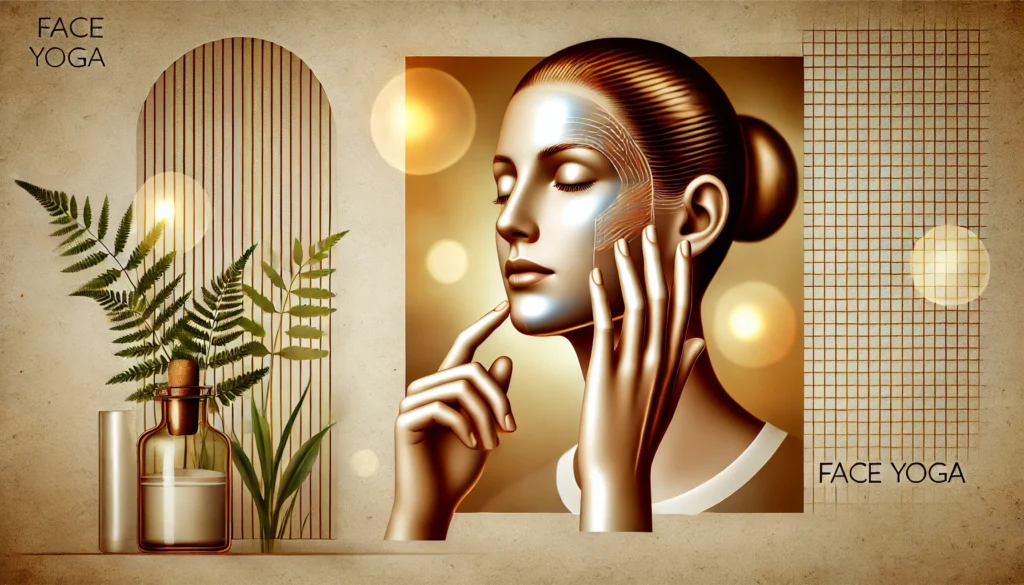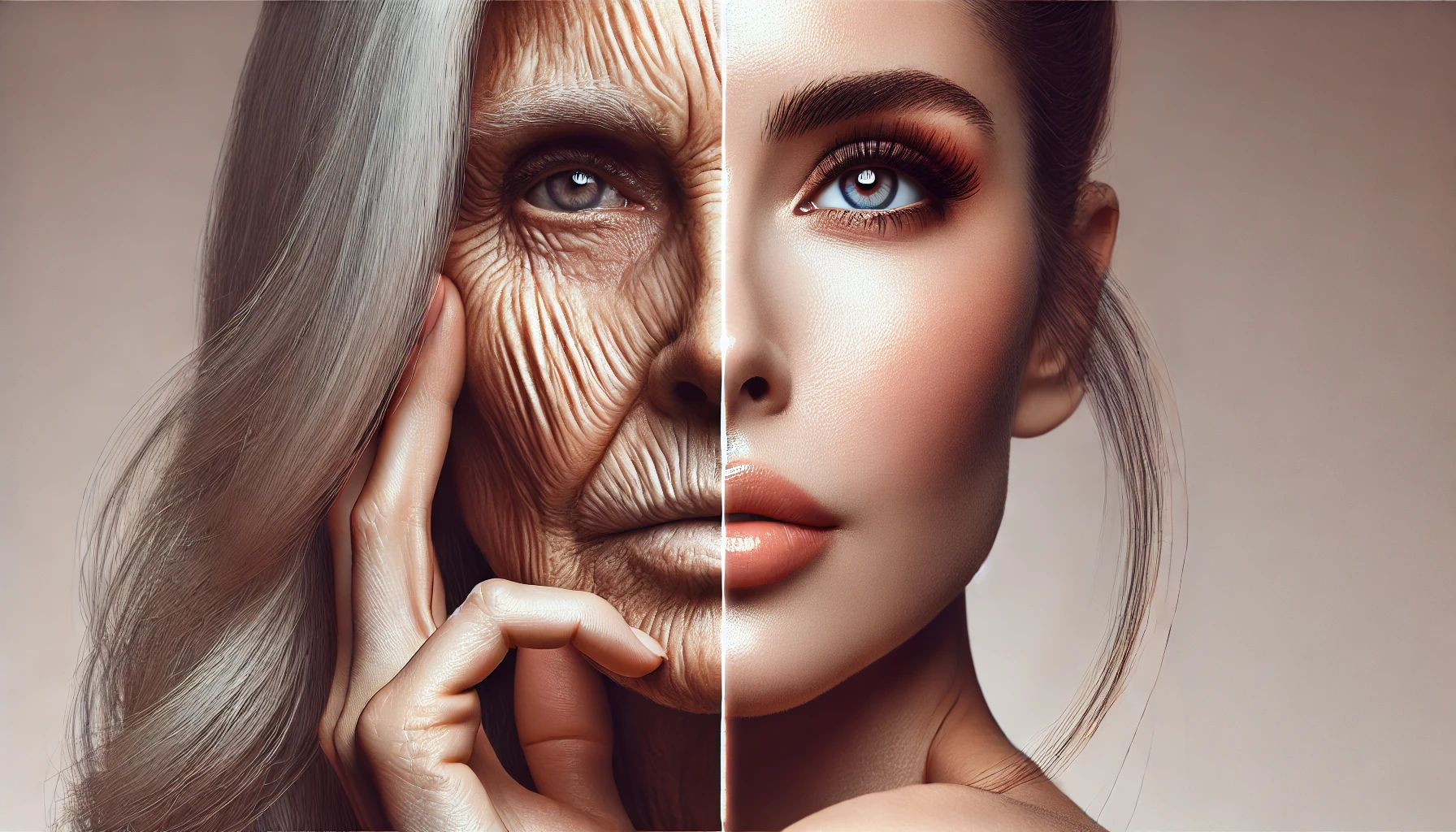The technique of face fitness (other names - yoga for the face or gymnastics for facial muscles) is actively promoted as a means of preventing, slowing down and even reversing age-related changes in the face and neck. We decided to check whether it has scientific evidence of effectiveness.
Glossy Media and blogs regularly publish collections of stories about stars, which prefer Botox and plastic face fitness. Among them are Gwyneth Paltrow, Jennifer Aniston, Meghan Markle, Jennifer Lopez, Jessica Alba, Vera Brezhneva and Victoria Bonya. Some publications about face fitness promise the following changes: “[Skin] cells begin to renew themselves faster, the muscular frame of the face is strengthened, and its contours become clearer, the density, firmness, and elasticity of the skin increases, and the relief of the face is evened out.” Other focus on getting rid of double chin, nasolabial folds, jowls and crow's feet. Experts sell copyright trainings at a price from several thousand to dozens thousand rubles per course.
Age-related changes conditioned a number of internal and external factors. The first include genetics, damage to cellular structures by free radicals and hormonal changes in the body. It is extremely difficult to delay or mitigate their impact. At the same time, it is easier to combat the effects of external factors - for example, sunscreens have been developed to protect against photodamage caused by ultraviolet rays, and you can protect yourself from the negative effect caused by an unhealthy lifestyle (smoking, drinking alcohol, an unbalanced diet, a sedentary lifestyle) by correcting it.
The sequence and severity of the aging process is unique to each person and depends both on the interaction of external and internal factors, and on the person’s resistance to these factors. However, within the framework of this unique process, all changes are happening due to a number of transformations in the structure of the skin and underlying tissues. Decreased production and accelerated breakdown of collagen and elastin, as well as hyaluronic acid, lead to changes in appearance. Under the influence of gravity and due to weakening of muscles, ptosis occurs - sagging of certain parts (eyelids, cheeks, neck). Due to a decrease in the amount of subcutaneous fat tissue, wrinkles appear on the skin (folds in the area of excessive activity of facial muscles), and due to a decrease in the volume of bone tissue, voids appear in the cheek area and on the border of the jawbone, especially under the ear. The skin color becomes less even, capillaries appear, and spots of hyperpigmentation may appear. Facial features in the areas of bony prominences become sharper, and fatty tissue is redistributed to the lower part of the face.
Physical exercise directly works on muscles and fat, and can also indirectly affect the skin - through improving blood circulation in it and creating “additional volume” under it from the already mentioned muscles.
Muscular frame of the face consists of of about 20–30 pairs of small muscles. Difference in calculations depends, firstly, on individual characteristics (for example, the presence of developed ear muscles allows people move their ears, but if parts of these muscles are missing, the ears will most likely be motionless), and secondly, on the calculation method (in some nomenclatures it is customary to divide a larger muscle into two separate ones). The facial muscles are divided according to their functions into two large groups: the first is responsible for chewing food, the second provides various facial expressions. In addition, individual muscles perform a number of other functions: they are responsible for the movements of the eyelids, protecting the eyes, holding food and food inside the mouth and preventing the flow of saliva, providing the ability to speak, sing or whistle. Almost all facial muscles are very small in size, some are barely comparable to the tip of the little finger.
With physical exercise, muscle mass increases, but this only works with large muscles - for example, you can pump up the gluteus maximus muscle or the biceps brachii muscle. With muscles as tiny as the facial muscles, this method will mostly not work. Firstly, the exercises included in the face fitness instructions will not be able to load these muscles to the required extent, and secondly, the facial muscles themselves are not capable of hypertrophy (increase in volume) in the same way as happens with the same biceps, explains Sebastian Cotofana, assistant professor of clinical anatomy at Mayo Clinic. Probably the only muscles that can be increased in this way are the temporal pair and the masseter. Visually, this will help the lower jaw look more square. However, this effect is unlikely to rejuvenate the face; moreover, such training can aggravate problems with the temporomandibular joint. Plastic surgeon Alan Matarasso in an interview Valerie Monroe, host of the "Ask Val" column for O, The Oprah Magazine, expresses concerns that repetitive movements that strain these muscles may even deepen wrinkles in the skin. Suzanne Olbricht, assistant professor of dermatology at Harvard Medical School, Agree with his colleagues: in theory, strengthening the facial muscles could prevent ptosis (gravitational sagging of the face), but in practice such results are unlikely to be achieved due to the too small size of the muscles and insufficient load that these exercises create. If there is any effect, she concludes, it will be too insignificant compared, for example, to that produced by dermal fillers. At a minimum, because, unlike fillers, which most often contain hyaluronic acid - an important component for youthful skin - exercises cannot force cells to produce substances necessary for cell regeneration.
Face fitness will also not help “build up” fat in places where it is lost with age. No amount of exercise promotes the deposition or retention of fatty tissue. Replacing the missing fat deposits with muscles to create the effect of fullness under the skin will also not work - simply due to the fact that, as mentioned above, the muscles will not increase in size from such exercises.
The only thing that facial yoga can influence to some extent is the appearance of the skin. Of course, face fitness will not smooth out wrinkles and will not remove excess pigmentation, but it can promote blood flow to the skin and slightly reduce dullness (just like any other aerobic exercise - for example, walking or running, swimming, skiing or skating, tennis or dancing). Massage therapist Vicki Bodner explains facial fitness for the Cleveland Clinic tells about another potential positive effect of this practice: “Every time blood flows into the facial area, the capillaries begin to work more intensely, this can help relax muscles and remove excess accumulated fluid.” Therefore, such exercises can help those with severe facial swelling look better. Susanne Olbricht sees Another bonus of facial yoga: stretching and movement exercises can be used to reduce the appearance of fresh scars and scars. In the fight against old skin changes, this technique is unlikely to be effective.

Apart from the opinions of experts, there is only one study effectiveness of facial exercises. In 2018, it was carried out by a team of scientists from the USA and Thailand. 27 women aged 45–60 years took part in it. First, they all attended two 90-minute training sessions with a certified face fitness instructor, and then had to do a half-hour course of exercises at home for eight weeks. Of the 27 volunteers, 11 were unable to adhere to the training schedule for personal reasons and therefore did not participate in the final evaluation. This assessment was carried out as follows: two doctors who were not involved in this study assessed the age and a number of parameters of the women's appearance. This assessment was translated into visual age—that is, how old the woman looked. Those who completed the entire eight-week course lost 2.7 years.
However, the study has a number of significant shortcomings, which the scientists themselves articulate. First, all the participants were motivated women struggling with the signs of aging, but even so, a significant portion of them (11 out of 27 people) were unable to maintain the required pace of classes. Secondly, the scientists did not claim homogeneity of the group - it is unknown how many participants resorted to cosmetic or surgical rejuvenation procedures before or even during the eight-week course. In addition, there is no data whether these women changed their daily skin care during the experiment and what was included in it. The third problem with the study was that it lacked a control group, which would have helped make the conclusion about the effectiveness of the exercises more reliable. For example, to study the effect of acupuncture, experimenters in a control group influenced not to special points, but simply to a random place. By analogy, the control group could be tasked with tensing and relaxing the facial muscles in a different sequence, frequency, and duration than the intervention group. Finally, the participants had already entered a certain period of life when age-related changes had already appeared, and therefore the study was unlikely to answer whether such practices would work to prevent them.
Specialists converge on opinion, which is most likely face fitness - an ineffective way to prevent or combat age-related skin changes. It won't help you build muscle mass enough to combat sagging skin, fill in fat deposits lost with age, or smooth out wrinkles. Like any other aerobic exercise, facial fitness can increase blood flow, which is likely to help combat dull skin and puffiness. Although the latest can be symptoms of a number of serious diseases, and it probably makes sense to first exclude these pathologies, and then improve your appearance with the help of facial exercises.
Cover image: GPT4o
If you find a spelling or grammatical error, please let us know by highlighting the error text and clicking Ctrl+Enter.






